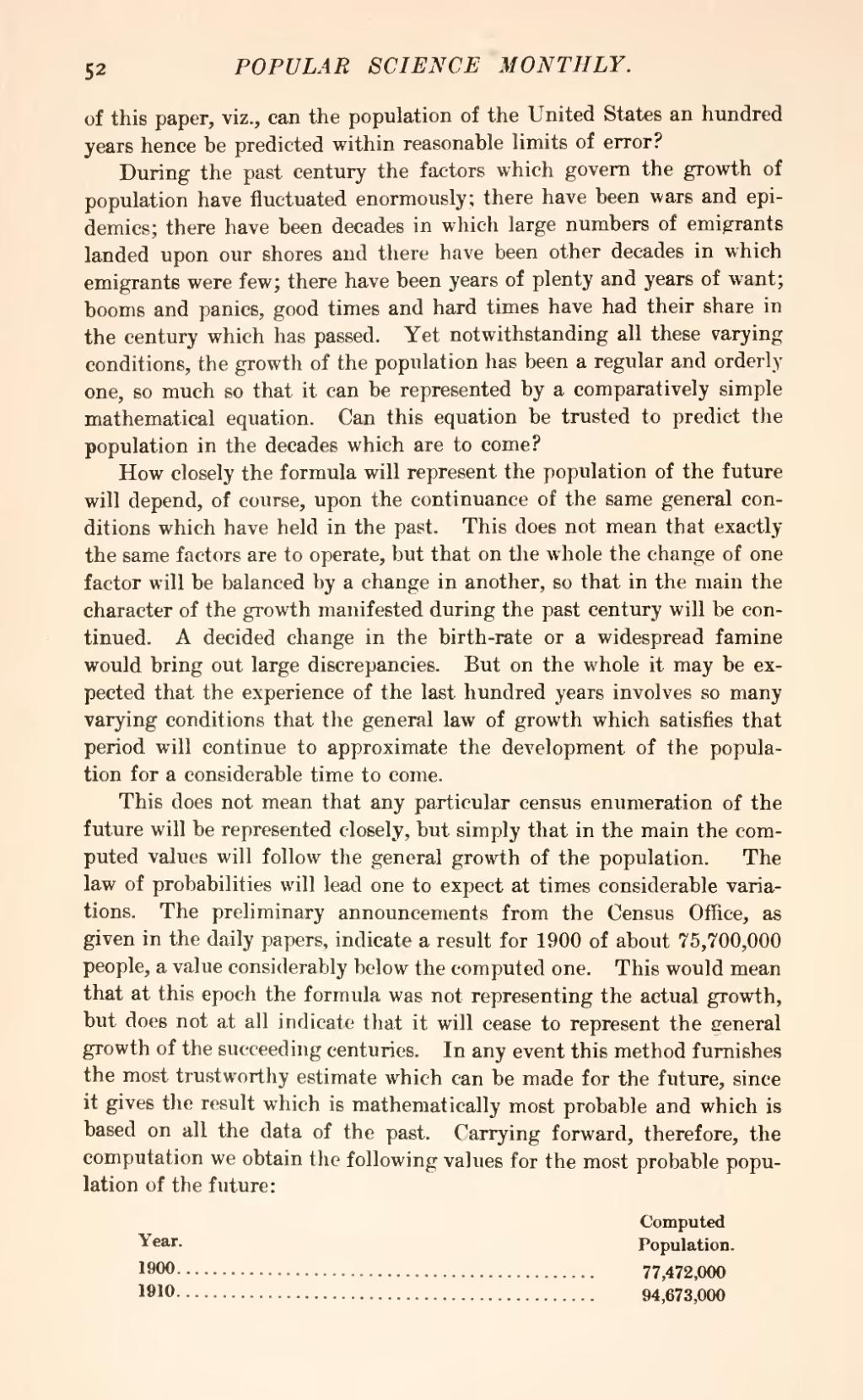of this paper, viz., can the population of the United States an hundred years hence be predicted within reasonable limits of error?
During the past century the factors which govern the growth of population have fluctuated enormously; there have been wars and epidemics; there have been decades in which large numbers of emigrants landed upon our shores and there have been other decades in which emigrants were few; there have been years of plenty and years of want; booms and panics, good times and hard times have had their share in the century which has passed. Yet notwithstanding all these varying conditions, the growth of the population has been a regular and orderly one, so much so that it can be represented by a comparatively simple mathematical equation. Can this equation be trusted to predict the population in the decades which are to come?
How closely the formula will represent the population of the future will depend, of course, upon the continuance of the same general conditions which have held in the past. This does not mean that exactly the same factors are to operate, but that on the whole the change of one factor will be balanced by a change in another, so that in the main the character of the growth manifested during the past century will be continued. A decided change in the birth-rate or a widespread famine would bring out large discrepancies. But on the whole it may be expected that the experience of the last hundred years involves so many varying conditions that the general law of growth which satisfies that period will continue to approximate the development of the population for a considerable time to come.
This does not mean that any particular census enumeration of the future will be represented closely, but simply that in the main the computed values will follow the general growth of the population. The law of probabilities will lead one to expect at times considerable variations. The preliminary announcements from the Census Office, as given in the daily papers, indicate a result for 1900 of about 75,700,000 people, a value considerably below the computed one. This would mean that at this epoch the formula was not representing the actual growth, but does not at all indicate that it will cease to represent the general growth of the succeeding centuries. In any event this method furnishes the most trustworthy estimate which can be made for the future, since it gives the result which is mathematically most probable and which is based on all the data of the past. Carrying forward, therefore, the computation we obtain the following values for the most probable population of the future:
Year. |
Computed Population. |
| 1900 | 77,472,000 |
| 1910 | 94,673,000 |
